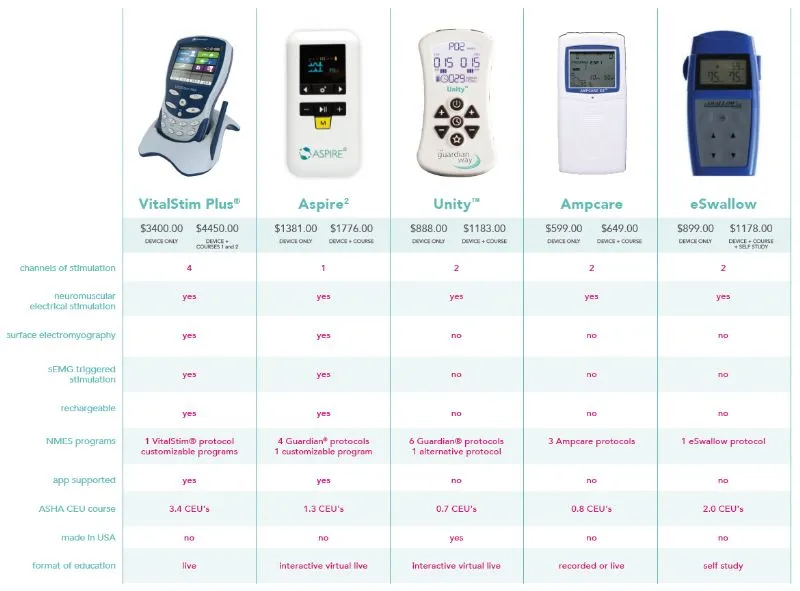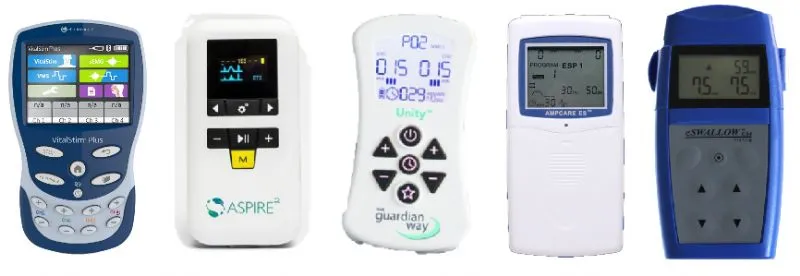 Written by Hulet Smith, OT
Written by Hulet Smith, OT
Difficulty swallowing, or problems during the process of eating or drinking - dysphagia - is a fairly common symptom resulting from a variety of conditions, and it’s a lot more common than you might think.
Each year, approximately one in 25 adults will experience a swallowing problem in the United States according to the American Speech-Language-Hearing Association (ASHA). It’s more common among older adults, and elderly populations have an increased risk of developing dangerous side effects like pulmonary aspiration and pneumonia.
Roughly 1 out of every 17 cases is experienced as an inability to swallow or difficulty swallowing that is accompanied by pain or discomfort during the act of swallowing.
For those who experience dysphagia, there is a wide selection of specialized medical equipment that is designed to assist in the process of rehabilitation, strengthening, and to make the whole swallowing process easier in general.
A relative newcomer to the Speech-Language Pathologist’s toolbox of treatment devices is the electronic stimulation therapy device, or E-Stim. These devices work somewhat like a TENS unit, delivering neuromuscular electrical stimulation to the muscles of the throat used in the process of swallowing. Using this stimulation along with complementary exercise, e-stim helps reduce rehabilitation time and improves outcomes.
Because of the growing popularity of using e-stim in the treatment of dysphagia, the market for these devices is broad and constantly advancing. VitalStim is by far the most well-known of the devices on the market, but there are a lot of newer alternatives as well.
To help you navigate this changing market, we’ll review some of the top options, their functions and features, and how they all compare.

Chattanooga’s VitalStim Plus E-Stim device is considered the standard for dysphagia e-stim devices by most SLPs. It features four channels of NMES as well as an sEMG function, making it great for both measurement and therapy in one convenient device.
App support encourages interactive use by providing progress tracking and Bluetooth screen mirroring for easier visibility and better engagement with the patient.
The Guardian Aspire2 from Spectramed is a relative newcomer on the market, but offers an improvement on the technology by offering dynamic E-stim functions that can be timed with exercises as well as sEMG readings that can be easily switched between with just the touch of a button.
A variety of programs, as well as adjustable frequencies, ensure it can be comfortably customized to each patient. Finally, it also includes interactive multimedia swallow training with app support and Bluetooth capability.
The Guardian Unity Swallow Stim is the first of the products we reviewed that only provides NMES, no EMG measurements. This allows the Unity to have a more varied set of programs or protocols for a wider array of treatment options including programs tailored for more sensitive users as well as users with more adipose tissues.
Two channels allow this device to deliver therapy through four electrodes, making it the perfect solution for more involved therapy without overwhelming the patient.
AmpCare’s Effective Swallowing Protocol is a device designed with two NMES channels that are formulated to deliver highly effective 30-minute treatment sessions to exercise the muscles associated with regular swallowing.
This device includes three different programs or treatment protocols. They also produce a range of postural support devices aimed at improving the overall motion of the swallow, which are designed to complement the NMES treatment.
The eSwallow Stim Unit is a dual channel E-Stim device that features a single program of NMES with a broad range of adjustable levels of intensity. The product uses a simple, yet effective visual display for control of stimulation, and is formulated to be easy to use yet highly effective.

Now that you have a good idea of the different options on the market today, we’ll break down some of the most important features and functions in e-stim devices and therapy for dysphagia and see how each device stacks up.
In addition to just NMES treatment, some e-stim devices also integrate sEMG to allow therapists to take measurements of the patient’s current muscle activation and use that data to better inform their plan of care.
sEMG is a great way to track a patient’s progress, compare their ability across patients, and facilitate a better, more accurate treatment plan. The two e-stim devices that offer this added feature are the VitalStim Plus and the Guardian Aspire2.
Going beyond sEMG measurements, some e-stim devices actually take this technology a step further and utilize the measurements taken by the sEMG to trigger appropriate stimulation.
Both the VitalStim PLus and Guardian Aspire2 include this ability, making the entire treatment process easier on the clinician and more customized for each patient’s needs.
Another valuable feature available with some E-Stim devices is app support that allows the user to more easily view the readout of their performance. Bluetooth capability allows the devices to connect directly to an iPad or other tablet and show a waveform of the muscle activation readouts. This is a capability shared by both the VitalStim Plus and Guardian Aspire2.
Another thing these devices share is the ability to bring an interactive element into the treatment session. This can be especially great for children, or for adults who have difficulty visualizing what they’re being asked to do. This training is designed to keep the patient engaged and actively participating throughout the process of E-stimulation.
One of the more important considerations to take into account when selecting an e-stim device is the number of NMES channels. The more channels there are the more electrodes can be used simultaneously.
Each channel can handle up to two electrodes, so you can usually assume that the number of channels a device has is half the number of electrodes it can handle. Keeping this in mind, here are the number of channels included with each of the devices we reviewed:
The number of programs included with each device is another major consideration to evaluate. No one patient is going to be exactly like any other patient, so the more programs you’re able to make use of, the more options you have for customizing treatment to each individual.
Some devices accommodate this need by offering custom programs, but it is important to keep in mind that while custom programs can be helpful, they increase the amount of time you have to spend adjusting the device, and take away from the actual time you spend administering treatment.
With that in mind, here are the number of programs included with each device:
The amount of time that a treatment can be applied through an instrument is another important feature to consider in an E-Stim device. Many products—such as the VitalStim, Guardian Aspire2, and Guardian Unity—offer adjustable treatment times.
Products such as the AmpCare device, however, only provide a single duration (30 minutes in the case of the AmpCare). Much like the ability to adjust the intensity of stimulation, customizable treatment duration is a valuable tool to ensure that an E-Stim device is tailored to the needs of each individual patient.
Another thing to consider that may seem minor, but can make a big difference especially if you’re performing e-stim therapy fairly regularly is the power source that your device uses. Whether your device is rechargeable or it uses battery power can have a big impact on how easy it ease to have therapy ready for every patient throughout your day.
Batteries may be more convenient in that you can simply swap them out when they die, but they also include an added cost and the risk of not having any on hand when you need them most.
Overall, after having reviewed the features and function of each device listed, the VitalStim Plus and two Guardian Way devices came out miles ahead of the AmpCare and eSwallow.
Comparing the VitalStim against the Guardian Aspire2 and Guardian Unity became a more complicated task, as each device is designed with quality and efficacy in mind. Each is probably the best choice for certain therapists or caregivers, depending on the features that you find most valuable in a device.
For instance, if you're looking for as many channels as you can get, the VitalStim is the way to go, but if you're looking for the ability to time swallow exercises with stim, then the Aspire2 or Unity would be a better choice.
For more information on treatment modalities, caregiving tips, and general healthcare knowledge, make sure you check out our full library of helpful articles on Caregiver University, powered by Rehabmart.

Co-founder/CEO of Rehabmart, Pediatric Occupational Therapist, husband, and father. Passionate about connecting special needs kids with superb nutrition, sensory integration, and complementary health strategies. Excited about Rehabmart's mission to become the premier online educational platform which empowers caregivers by spotlighting innovative devices and interventions to achieve optimal patient response and recovery.